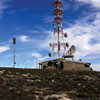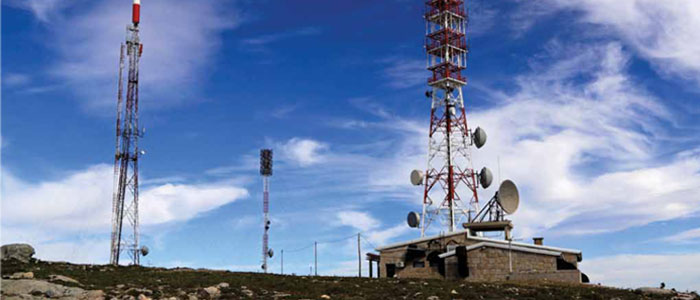
In The Field
Automated system detects and prevents potential criminal activity
- By Rolland Trayte
- Apr 01, 2012
Cell towers and accompanying cell sites attract more attention in the area of security than ever before. The elevated structures, which support antennas as well as one or more sets of transmitters and receivers, digital signal processors, control electronics, and primary and backup electrical power sources, and their surrounding facilities are plagued by copper theft and other criminal activity. To limit loss and crime, owners are in dire need of new ways to protect their sites, which often serve as the lifeblood of a local telecommunications network.

Corporations invest significantly in telecommunications equipment and cell towers to ensure service is provided to the company’s network of customers at all times. A reliable network is paramount to a successful telecommunications business as well as current and future growth. The major issues telecom sites face stem from the depressed economy and the increase in metal prices. As prices for metal, especially copper wire, increase, criminals seek to gain hold of an easy way to steal and sell material. Unfortunately, this “quick fix” leads to losses in the tens of thousands of dollars and, often, negatively impacts public safety.
Not only does theft cost businesses significant amounts of money, a telecom outage affects service to customers who rely on a company’s services for communication, including public safety authorities. First responders and other emergency services typically rely on wireless towers for both back-up and field communications. Most wireless towers also provide a platform for local municipal government, law enforcement and public safety antennas. If their traditional high-band radio frequencies go down for whatever reason, they will transition to cellular as a back up. Therefore, losing a cell tower in a critical location may impact public safety forces as well. Adding more complexity to the situation, the damage derived from an outage not only affects the physical confines of a facility but also its brand. Furthermore, federal authorities must be notified when criminal trespassing, system failure and outages or tower lighting failure occurs.
Security departments and leaders charged with securing these disperse and remote sites often need technology systems that provide real-time information and timely intelligence to prevent issues, interrupt crimes in progress and limit equipment damage.
Security in Action
To limit criminal activity, loss and damage, telecom companies focus on enhancing safety around their perimeters. Video surveillance, barriers and fences, electronic access control and security patrols are regularly deployed to enhance security in geographically disperse areas. These systems and programs are highly valuable in gathering data after an incident has occurred but are not empowered to stop crime before it starts. Video surveillance is often not monitored in real-time; therefore, no action is taken to stop an incident from occurring. Access control is useful in tracking and managing who has access to a facility and limiting access to high-security areas, but it can often be overpowered by schemes such as piggybacking, fraudulent access cards and shared passwords—and by those who simply scale a fence.
When it comes to security staff, the market has changed significantly. Security officers are assigned more duties than ever before, and the increased purview makes it difficult for even the most trained guard to manage all tasks to the best of his ability. Security personnel are used as entryway greeters to enhance customer and visitor interaction and thereby reduce the chance of crime occurring. Given that most of these systems and initiatives focus on securing the interior portions of a facility, the security of outdoor areas and a building’s perimeter is often left as a second thought. Together, these factors attribute to an environment that is much more challenging to patrol and secure than ever before.
Every day new technologies are being designed to help security teams effectively secure their infrastructures. Cameras based on the IP backbone can allow the sharing of information freely between multiple locations, and networked access control systems can integrate video with access events for further situational awareness. A new solution is also radically changing the protection of outdoor environments and stopping crime in its tracks at locations such as cell sites.
Intelligent detection solutions are technology systems designed to mimic the actions of a security guard to prevent crime before it occurs. The automated platform engages in the same motions and movements of a security guard to deter crime and can gather data on how and why crimes are occurring at a particular site. By using such systems in outdoor environments and perimeter applications, security patrols are automated, leaving security staff to focus on critical tasks rather than patrolling low-risk areas.
The Future of Crime Prevention
Intelligent detection solutions are developed on the idea that intelligent technologies can prevent and deter potential criminal activity before loss or damage occurs, while decreasing response time. These solutions can be used to enhance perimeter security and safety in cell sites and towers and are proven to reduce criminal activity by as much as 90 percent. By leveraging advanced algorithms, these systems automatically identify potentially dangerous targets within 1,000 feet and track objects to deter criminal behavior. Once it detects motion in a userdefined area, the system illuminates activity with a high-intensity LED light and then rotates to and from the detected activity zone. Once motion is no longer detected, the device conducts an overarching area-wide search. Then, the device conducts regular patrols of an area, scanning for unusual behavior. In essence, the solution conducts a constant and consistent guard tour to reduce the likelihood of criminal activity in its patrolled area.
Ask any security leader and he or she will tell you that vulnerability begins at a facility’s perimeter. The best chance of preventing a security breach and reducing losses is to deter and detect activity before loss or damage occurs. Yet many attempts at advanced detection—leveraging video analytics—are limited due to excessive false alarms and the challenges of outdoor conditions, including weather and environmental factors. Intelligent detection technologies, like the ones described above, use advanced, exterior PIR sensors for enhanced reliability in all weather situations. Unlike video analytics, the system does not differentiate between different kinds of movement, so it is a reliable source to provide data on all areas of activity. Security leaders can use the collected data to develop trends, such as peak hours in which activity occurred.
The Overall ROI
When a potential intruder realizes he has been seen by security staff or detected by video surveillance, he most often leaves the scene. Because intelligent detection technologies patrol a site the same way as a security guard, it has the same effect. The system’s capability to distinguish movement in a wide geographic area makes coverage effective and reliable. But because cell sites provide unique security challenges depending on their location and risk profile, advanced detection solutions have a customizable field of protection to adapt to the size of the area they search. Furthermore, the devices’ tracking patterns are customizable and easy to adapt.
Security guards increasingly rely on the help of integrated security technologies to boost patrols. Technologies that enable guards to focus on critical tasks rather than patrolling areas with no visible threat provide a high-level of return to users. More ROI is realized when technologies can be easily integrated with other systems to provide more awareness. Intelligent detection systems can be combined with video surveillance not only to prevent crime through their automated patrols but also capture valuable video evidence to enhance guard response and emergency responder safety. By including video surveillance as part of the overall security solutions, security can tap into video footage that corresponds with an event before deploying the correct level of response. Intelligent detection systems are not meant to replace security guards; rather, they are designed to augment the value of on-site security staff. These advanced technologies are used to automatically patrol a cell site while guards are empowered to provide other value-added security services. When you combine highly trained security officers with intelligent detection systems, a facility is safer, more secure and less vulnerable.
This article originally appeared in the April 2012 issue of Security Today.